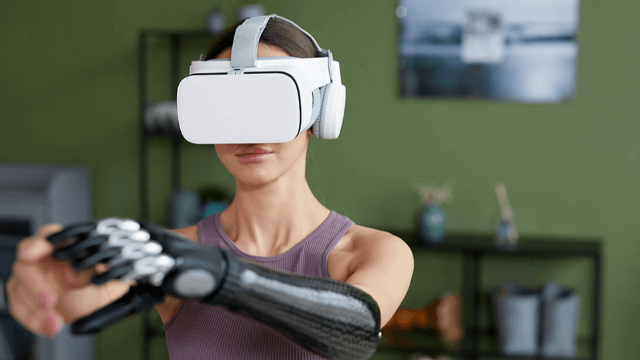
Feb 21, 2023
The advancement of virtual reality technology has enabled us to explore and experience the world in new ways. In the coming years, virtual reality technology is expected to make even more significant advances, offering more immersive experiences and more powerful applications. By 2023, we can expect to see a wide range of new VR technologies entering the market, from enhanced displays to improved tracking to higher-resolution graphics.
One of the most exciting developments in virtual reality technology is the introduction of augmented reality (AR). AR combines real-world images with digital information to create virtual images that appear in the user's environment. This technology can be used to create immersive experiences, such as interactive 3D environments, interactive maps, and 3D models. AR also has the potential to be used for educational, marketing, and medical purposes.
Another major development in virtual reality technology is the introduction of gesture-based control. This technology allows users to interact with virtual objects and environments using simple hand gestures. This technology can be used in gaming, training, and even in medical applications. With this technology, users can move objects in virtual worlds and manipulate objects in real life.
The next generation of virtual reality technologies will also include more advanced tracking systems and improved displays. New tracking systems will allow users to move around in virtual worlds with greater accuracy, while improved displays will provide higher resolution and improved color accuracy. This will enable users to experience even more lifelike and interactive experiences.
Finally, we can expect to see the next generation of virtual reality applications. These applications will be designed to take advantage of all the new features and capabilities of VR technology. We can expect to see applications that will allow users to experience virtual worlds, play virtual reality games, explore virtual educational environments, and more.
Overall, the next few years of virtual reality technologies will bring even more powerful and immersive experiences. With improved displays, gesture-based control, and more advanced tracking systems, we can expect to see a wide range of applications and experiences that will revolutionize the way we interact with the world.
Future developments in virtual reality
Soon, virtual reality will become increasingly immersive and interactive, with improvements in graphics and audio. There will be a greater focus on creating realistic experiences that take into account the physical sensations of being in a virtual environment. The development of headsets and controllers that provide haptic feedback will make the experience even more realistic.
In addition, the ability to interact with avatars in virtual worlds will become more sophisticated. Avatars will become more realistic and will be able to understand and respond to user input. The use of natural language processing and machine learning algorithms will enable avatars to become more lifelike.
There will also be more opportunities to create custom virtual worlds tailored to individual preferences. This could include creating unique environments with user-generated content.
Lastly, virtual reality will be increasingly used in education, with virtual classrooms and virtual laboratories becoming more commonplace. This could open up educational opportunities to people who may not have access to traditional classrooms.